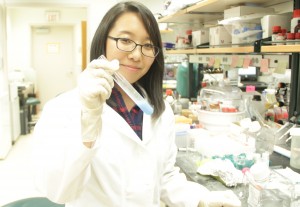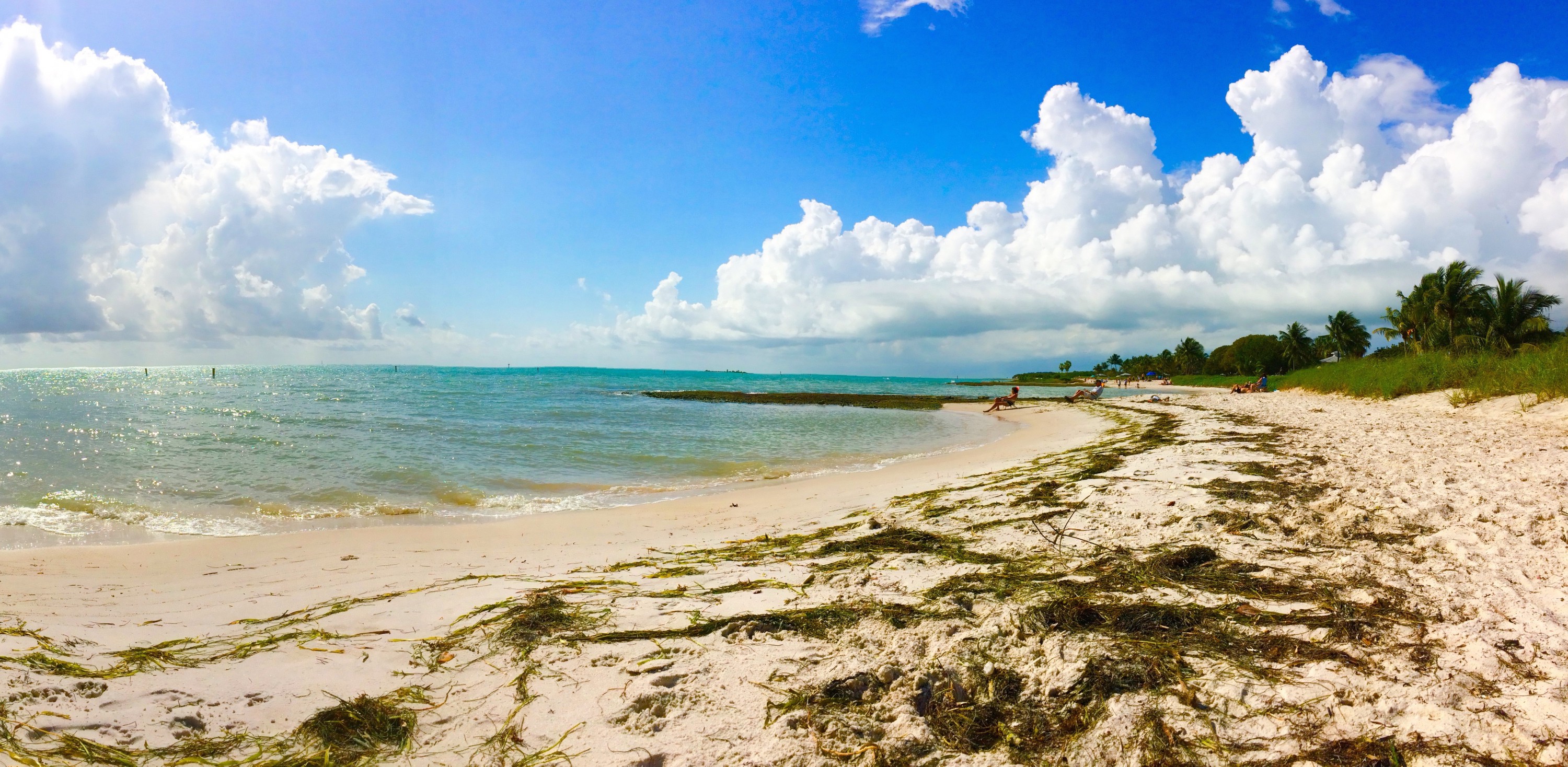Do you want to go to the beach? This question likely brings to mind the sound of the waves crashing against the shore, the smell of the sea and delicious food from beachside vendors, and the cool sensation of spreading sunblock across your skin. From an early age, it is ingrained in our minds that sunscreen is the best way to protect against skin cancer. What if it turned out, however, that the same product you use to avoid getting skin cancer could actually cause damage to the very cells you are trying to protect?
Fortunately, a team of Yale researchers has developed a new sunblock formula that will block the sun’s rays without generating the dangerous byproducts produced when applying typical sunscreens. When sunlight makes contact with sunscreen, it carries excess energy that has to be converted into another form. Commercial sunscreens sink into the skin, and the solar radiation is changed into a form that can be dangerous to skin cells. This new sunscreen agent, however, binds tightly to the top layer of the wearer’s skin, preventing it from sinking in. This means that when sunlight makes contact with the sunblock, the converted energy is given off as harmless heat. The secret behind this new sunscreen agent is nanoparticles, incredibly small particles that in this sunscreen form a stronger barrier between your skin cells and the sun’s radiation.
Shining light on the dangers of solar radiation
Sunlight is made up of a broad range of wavelengths. Long-wavelength radiation has very little energy and does not risk causing skin cancer. UV radiation, on the other hand, is composed of shorter wavelengths and is therefore very energetic. Because UV radiation has so much energy, it can act as a genotoxin, meaning that it has the ability to alter an organism’s most fundamental genetic material: DNA.
UV radiation causes DNA mutations in cells and puts the individual at risk of developing cancer. The reason UV radiation is most often blamed for skin cancer, as opposed to other types of cancer, is because sunlight can most easily reach skin cells. This risk of developing skin cancer is precisely why we apply sunblock before going outside for extended periods of time. Sunblock serves to literally block your skin cells from the DNA-altering properties of the sun’s high-energy radiation.
Dissipating the energy
The Law of Conservation of Energy states that energy cannot be created or destroyed, only converted from one form to another. It is based on this principle that the active ingredients in current sunscreens function by converting solar radiation to other forms of energy. If this conversion occurs on the skin’s surface, the energy is given off as heat. This is a harmless process that does not put the sunblock wearer at risk. In this scenario, sunblock can be compared to a gate that prevents any intruders from invading.

The danger arises when the sunscreen sinks into the wearer’s skin cells. Sunscreen can be absorbed more deeply into the skin when the particles that compose it are smaller. Unfortunately, this is often the case with more translucent sunscreens, which tend to be more aesthetically pleasing than opaque, pasty formulas made of larger particles. When sunscreen sinks into the skin beyond the top layer, reactive oxygen species (ROS) are formed. These are molecules that readily engage in chemical reactions, including reactions with DNA. The formation of ROS from sunblock’s energy conversion can cause damage to cells and the DNA that sunblock is meant to protect. In this sequence of events, the gate which was meant to protect against intruders has been broken down.
Strengthening our defenses
Michael Girardi, a professor at the Yale School of Medicine, was intent on preventing the formation of these reactive species. Girardi was surprised to see how high the levels of ROS formation were when he tested commercial sunscreens. “The incidence of skin cancer appears to be increasing,” Girardi said. He hoped to help address the problem by improving the formulation of sunscreens. Girardi joined Mark Saltzman as part of the Saltzman research group, and the two were able to combine the strengths of their respective fields of dermatology and biomedical engineering to develop an improved active sunscreen agent.
“What makes our sunscreen different from those that are currently available is its adhesive quality,” said Yang Deng, a member of the Saltzman group. Instead of sinking into the skin, the sunscreen binds to the skin’s surface. Not only does this prevent the formation of damaging reactive species, but it also comes with comestic benefits. Since the substance doesn’t sink into the skin, allergic reactions to sunblock will be decreased. If you have ever had acne or a rash develop after using sunblock, you can breathe a sigh of relief, as irritation will be lessened with the use of this formula.
Small but mighty
You might expect that the particles of the team’s sunscreen are very large in order to prevent them from sinking into the skin. Surprisingly, the particles are not only small but are nanoparticles — particles which have diameters of about 1/10,000 of a millimeter. “The particles were engineered to bind to the skin with incredible adherence while encapsulating the active ingredients of sunscreen,” Girardi said. When the particles break down, they split into safe substances, like lactic acid which is produced by one’s muscles during exercise. In addition to having safer byproducts, the sunscreen developed was found to be even better than the typical active ingredients in sunscreen at absorbing a broad spectrum of UV radiation.

Beyond providing improved skin protection, the formula also has desirable aesthetic properties. Unlike current sunscreens, this formula is more transparent. “It couldn’t be seen with the naked eye. That was a pleasant surprise,” Girardi said. The fact that the sunscreen has been a success in so many regards is a testament to the effective collaboration of researchers with expertise in varying fields within the Saltzman group. As Deng emphasized, the whole team worked very closely together to advance the research.
The new sunscreen is also more convenient to use. Beachgoers need to reapply sunblock multiple times over the course of the day to ensure adequate protection. The researchers’ sunscreen agent has been found to last on the skin for days, only being removed when the skin was rubbed with a damp towel. The towel removes the sunblock agent by helping shed the top layer of the wearer’s skin. Although this may initially seem like a concern, your body actually naturally sheds skin cells. In fact, about 20 of your outermost layers of skin consist of dead cells. This method of removing the sunscreen agent by removing dead skin cells highlights Deng’s achievement in developing a nanoparticle that binds very strongly to the wearer’s skin.
As opposed to having only one goal in mind for the future of this research, the Saltzman research group has decided that the sky is the limit. In regard to the sunscreen formula, the team wants to develop a method of applying it in a lotion or cream form that only has to be applied once a day. Beyond sunblock, the team has other ideas that could positively impact different areas of a consumer’s daily life. “We’ve come up with literally over 50 different potential ways that we might be able to use the same nanotechnology platform,” Girardi said.
Should I throw out my sunblock?
An emphatic no. The group still has further tests to conduct, and while you may be applying sunscreen designed by the Saltzman research group in the near future, you won’t find it on the shelves yet. In the meantime, do not take a vow to stop using sunscreen, as the benefits far outweigh any potential downsides. “The last thing I want is people to stop using sunscreen and, [as a result], suffer from more damage,” Girardi said. It looks like sunblock will continue to be a fundamental part of a trip to the beach.
Extra Reading:
Gruijl, F.R. De. “Skin Cancer and Solar UV Radiation.” European Journal of Cancer 35, no. 14 (November 1, 1999): 2003-009. Accessed February 5, 2016.
About the Author:
Kendrick Umstattd is a freshman Electrical Engineering and Computer Science major in Berkeley College. She is a Copy Editor for the Yale Scientific Magazine and works as a research assistant in Yale’s Social Robotics Lab.
Acknowledgements:
The author would like to thank the Saltzman Research Group for their commitment to advancing research in skin protection, with a special thanks to Dr. Mark Saltzman, Dr. Michael Girardi, and Dr. Yang Deng for their time and enthusiasm.

